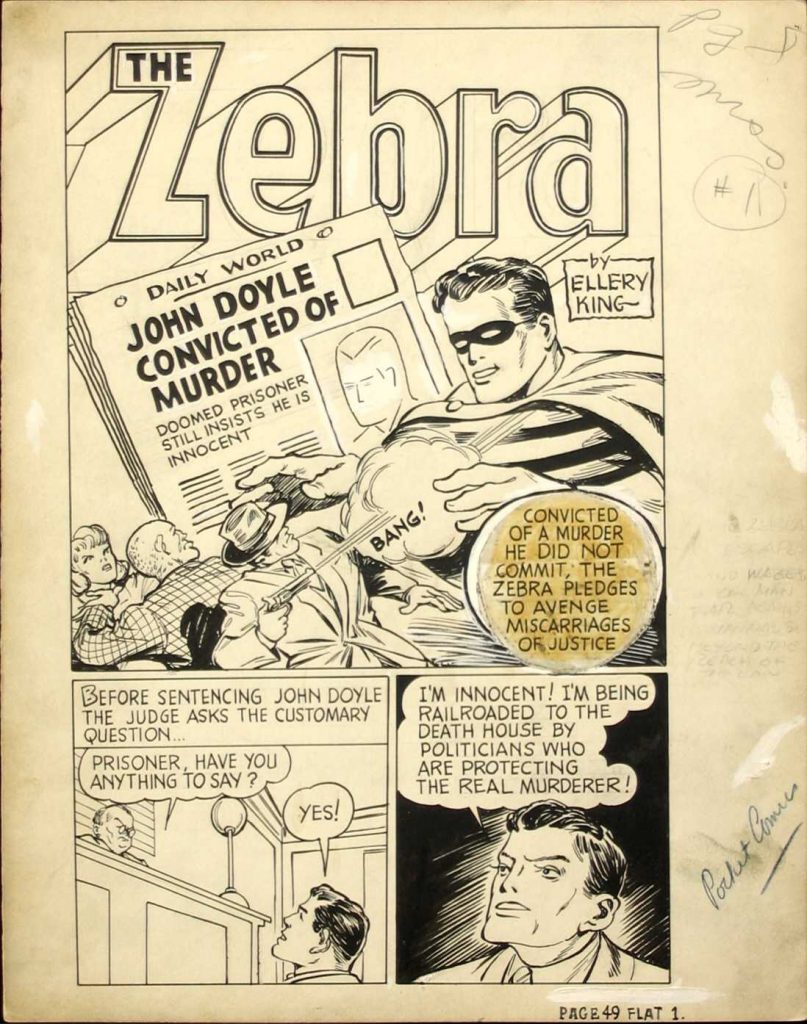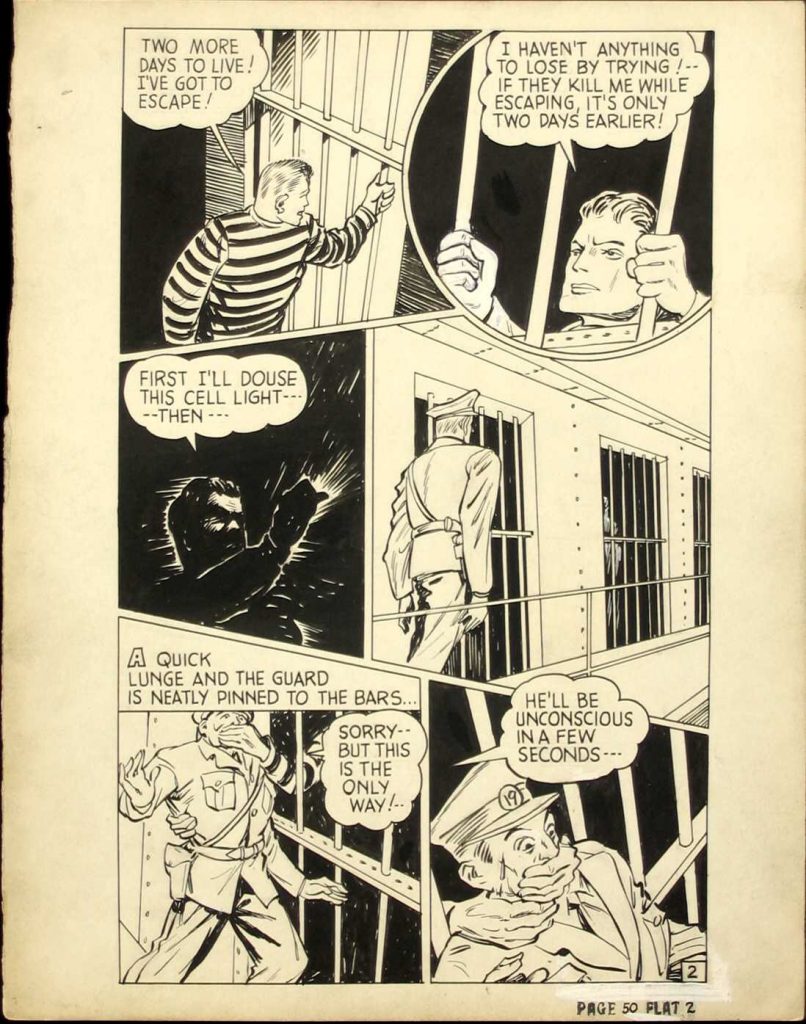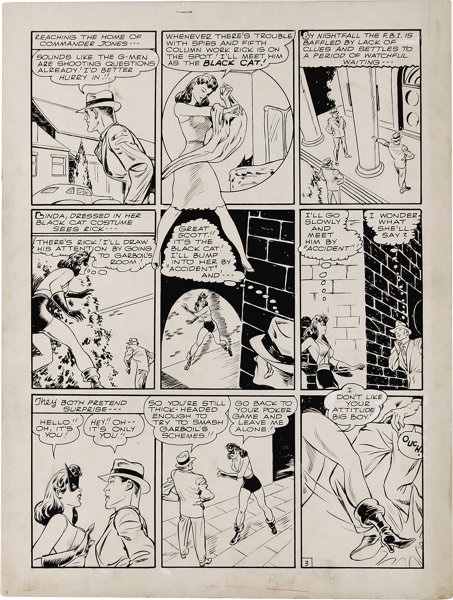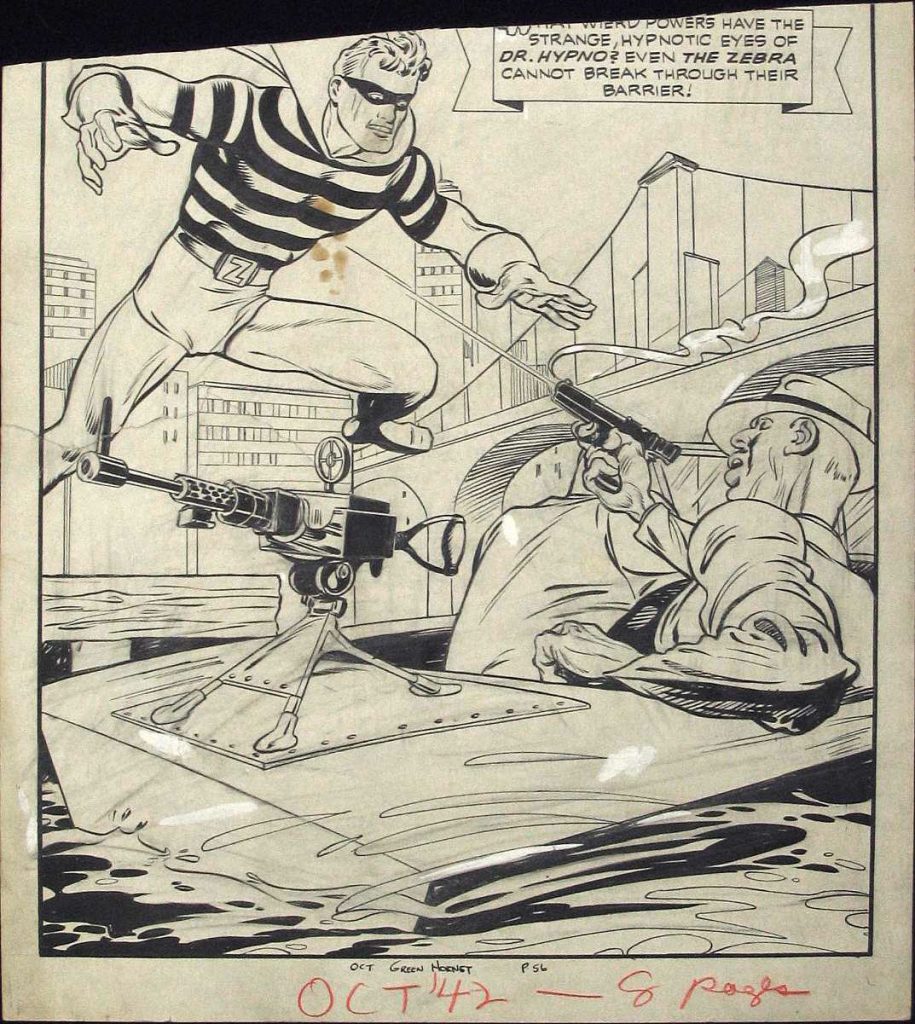 When I caught a tweet from the Comics in the Golden Age Podcast about a US costumed hero called The Zebra, I had to admit I was a bit sceptical. Was this some bizarre April Fool’s Day prank to try to convince us a US comics publisher had finally jumped the shark when it came to silly superhero names and even crazier origin stories? But no – this wannabe 1940s Batman wannabe is quite legit, although he hasn’t had an adventure for decades…
When I caught a tweet from the Comics in the Golden Age Podcast about a US costumed hero called The Zebra, I had to admit I was a bit sceptical. Was this some bizarre April Fool’s Day prank to try to convince us a US comics publisher had finally jumped the shark when it came to silly superhero names and even crazier origin stories? But no – this wannabe 1940s Batman wannabe is quite legit, although he hasn’t had an adventure for decades…
The Zebra was the alter ego of John Doyle, an attorney who was falsely accused of a crime. After clearing his name, he decided to turn his prison suit into a crime-fighting costume and took the name of the Zebra.

Pocket Comics #1, cover by Joe Simon
The character first appeared in Pocket Comics #1, published in August 1941 by Harvey. Credited to “Ellery King”, an obvious pseudonym with a nod to then best-selling murder mystery author Ellery Queen. Writers on this first Issue have been identified as Otto Binder, Gary Blakey and publisher Alfred Harvey, but I haven’t found any specific information on who of this trio came up with The Zebra.
The art has been identified as the work of often talented penciller Pierce Rice, inked by Argentinian artist Arturo (Arthur) Cazeneuve and, it survives to this day, the entire strip viewable here, on the personal web site of Heritage Auctions Co-Chairman James Halperin (along with many, many, other great artworks). Thank you, James.



Pocket Comics #1 was home to quite a few “firsts.” As noted here on Atomic Avenue, it was the very first Harvey comic. Second, it featured the very first appearance of a character that would become Harvey’s most-popular character during the 1940s, the female heroine Black Cat (Linda Turner); it was the first regularly issued US comic book in digest format; and, as Harry Mendryk notes here for the Jack Kirby Museum, the cover is Joe Simon‘s first work for Harvey.
Besides The Zebra and Black Cat, the comic also featured the first appearances of other heroes Red Blazer (Jack Dawson), The Spirit of ‘76, Phantom Sphinx (General Amron), British Agent 99 (Alan Douglas, credited to “William Churchill”) and Spin Hawkins.

“Alfred Harvey broke into the comic book publishing business with an ingenious idea,” notes Mark Arnold. “If a 64-page comic book that’s a quarter size of a newspaper page can sell for a dime, why not fold it in half and sell 128 pages for the same price? And thus, Harvey Comics was born!”
Unfortunately, while it may have seemed a great idea at the time, Don Markstein notes retailers complained that this experiment in publishing half-sized comics was too easy to steal, so it only lasted four issues, ending with its January, 1942 issue.
(Hmm – perhaps there is something in WHSmith stores saying the same thing about Commando here in the UK after all…)
The Zebra wasn’t down just yet, though. The convict turned hero transferred to Speed Comics, joining Captain Freedom and Shock Gibson – but that lasted only one issue. Later that year, when Harvey took over publication of The Green Hornet, The Zebra turned up in its back pages, first in a reprint of his origin in #7 (June, 1942) remaining until #30 (June, 1946), battling the likes of Dr. Diabole, the Rattler, the Human Frog, and Dr. Hypno across his adventures… but hasn’t been seen since.
The Zebra in action in a back up strip for Green Hornet #9, art by Pierce Rice
“He didn’t take the ‘convicted felon’ schtick nearly as far as 711, who operated as a superhero while in prison, but strained credibility less, and lasted more than twice as long,” says Don in his overview of the character on the brilliant Toonpedia site.
His first artist, Pierce Rice, fared better. He already had his his own studio from 1939, working alongside with Arturo and Louis Cazeneuve, initially breaking into the industry with work for Fox Comics, Fawcett and Centaur, but mainly for Harvey, drawing The Zebra, Green Hornet, Captain Freedom and Black Cat.

Art for a Black Cat adventure from Speed Comics #19 (Harvey, 1942) by Pierce Rice and Arturo Cazeneuve
Drafted into the US Army in 1943, serving in Europe and drawing for the Seventh Army Newspaper in Heidelberg, after his demob he began work at DC (among others), drawing characters such as Crimson Avenger, The Spectre and Manhunter. He left comics in the mid 1950s to become a magazine illustrator, later becoming a renowned art critic and teacher at the University of Pennsylvania. He died in 2003.
I hope you enjoyed this foray into US comics curiosities. Which British comic characters have equally bizarre names and origins for you?
• The Zebra Public Domain Comics Checklist: Pocket Comics #1-4 | All-New Comics #7,10 | Green Hornet Comics #7-24, 26, 28-30 | Speed Comics #16
• Read Don Markstein’s The Zebra profile on Toonpedia
• Read the first The Zebra story on James Halperin’s web site
• Lambiek: Pierce Rice | Arturo Cazeneuve
• Comic Reporter: Pierce Rice Obituary
• For the Comics in the Golden Age Podcast, beamed from North Carolina, hosts Chris and Mike explore and discuss comics from 1938 to 1955, the Golden Age of American comics. Find the online at www.comicsinthegoldenage.com
The founder of downthetubes, which he established in 1998. John works as a comics and magazine editor, writer, and on promotional work for the Lakes International Comic Art Festival. He is currently editor of Star Trek Explorer, published by Titan – his third tour of duty on the title originally titled Star Trek Magazine.
Working in British comics publishing since the 1980s, his credits include editor of titles such as Doctor Who Magazine, Babylon 5 Magazine, and more. He also edited the comics anthology STRIP Magazine and edited several audio comics for ROK Comics. He has also edited several comic collections, including volumes of “Charley’s War” and “Dan Dare”.
He’s the writer of “Pilgrim: Secrets and Lies” for B7 Comics; “Crucible”, a creator-owned project with 2000AD artist Smuzz; and “Death Duty” and “Skow Dogs” with Dave Hailwood.
Categories: Creating Comics, downthetubes Comics News, downthetubes News, US Comics

 Prince Valiant Artists illustrators Special #19 Limited Edition announced
Prince Valiant Artists illustrators Special #19 Limited Edition announced  What, Me Worry? At of MAD exhibition at the Norman Rockwell Museum
What, Me Worry? At of MAD exhibition at the Norman Rockwell Museum  Comix: The Underground Revolution bargain offer from Knockabout
Comix: The Underground Revolution bargain offer from Knockabout  British creators Liam Sharp, Richard Starkings and Bryan Talbot, among 2024 Eisner Award nominees
British creators Liam Sharp, Richard Starkings and Bryan Talbot, among 2024 Eisner Award nominees